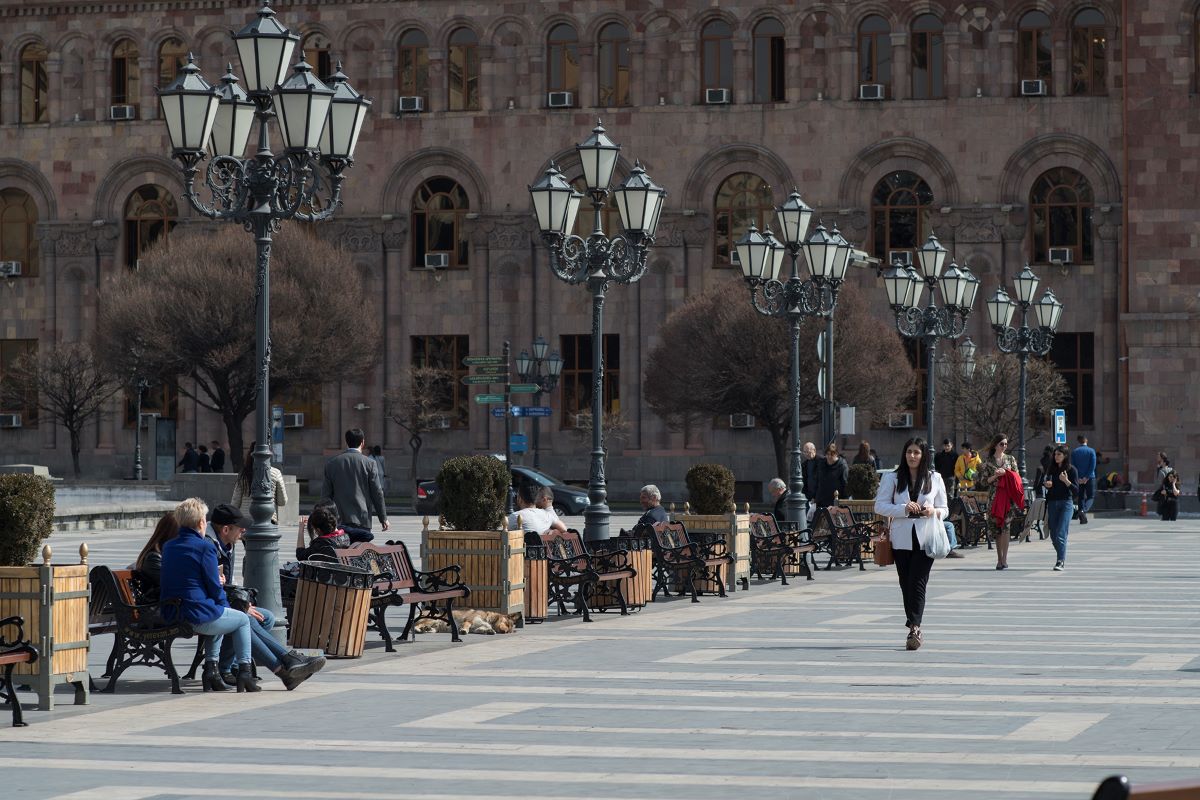
Inflation in Armenia
This year, the cost of living in Armenia has risen significantly. Price increases in the food market have affected nearly all residents of the country. For instance, vegetables have become about 9% more expensive compared to last year. Prices for coffee, tea, cocoa, sugar, confectionery, oils and fats have also increased to varying degrees. Alcoholic beverages have gone up by 7%, while the price of liquefied gas has surged by more than 50%.
By the end of 2024, a high inflation rate is expected. This was officially announced by the Chairman of the Central Bank, Martin Galstyan. In response, the Central Bank lowered the refinancing rate to 8%, citing the need to stabilize and reduce prices.
The refinancing rate is the annual interest rate paid to the Central Bank for loans it provides to credit institutions. When the rate increases, loans become more expensive as banks aim to make a profit. When it decreases, loans become cheaper as banks seek to retain customers and support circulation.
A farmer explains why he is selling his products at higher prices, while economists assess the situation and propose solutions
- Fitch has maintained Armenia’s economic rating among countries with a “stable outlook”
- “Between a rock and a hard place”: Armenian banks will no longer service Russian “Mir” cards
- The effect of “positive and negative shock” on Armenia’s economy. Opinion
Farmer on the reasons for price increases
Vachik Aloyan has been engaged in agriculture for 20 years. He says this year’s rise in vegetable prices is well justified. In previous years, he and other farmers raised prices when they noticed how much more middlemen were selling the same vegetables and fruits for. However, this year, there were several valid reasons for the increase.
He has a 4,000-square-meter plot where he grows vegetables, which he sells directly in the courtyards of apartment buildings in Yerevan.
“To transport my goods to Yerevan and back, I have to travel about 70 km. I make the trip to Yerevan every two days. This means I travel at least 10-12 times a month. With liquefied gas prices doubling, I can’t cover these costs out of my own pocket. That’s why I have to raise the prices of my products,” Vachik explains.
Additionally, weather conditions affected the harvest. Compared to last year, the yield was about 30% lower.
“Due to prolonged rains, I started bringing my harvest to market later. And what I sold wasn’t of very good quality. Two or three days of nonstop rain ruined the crops,” the farmer says.
He explains that the agricultural market is a free market. If some farmers, for various reasons, can’t sell their goods for less, others take advantage of the situation:
“It’s important to consider scale. If I work on a 4,000-square-meter plot, my harvest costs me more – for various reasons. But there are farmers who work on hectares, have employees, and contracts with processing companies. They see that small farms are selling at higher prices, so they raise their prices too.”
Despite inflation, wages are not being indexed
Karen Chilingaryan, head of the NGO “Consumer Advisory Center” and an economist, states that the rise in consumer prices, including food, is a global trend. Inflation exists in every country. However, even small price increases have a painful impact on residents of Armenia.
“Price increases are a normal occurrence and depend on various factors. What is abnormal is that, despite the rising costs, wages, pensions, and benefits are not being indexed. As a result, people suffer and develop justified dissatisfaction, but this remains ignored by decision-makers.
Armenia is primarily an importing country. It’s clear that goods, including food products, travel a long way before reaching consumers. I’m referring to transportation costs, customs clearance, and fluctuations in the dollar-to-dram exchange rate. All of these factors significantly influence pricing,” he explains.
Chilingaryan adds that this year, the prices of vegetables and fruits were largely affected by weather conditions and farmers’ inadequate approaches to their work:
“It’s time for farmers to plan what crops they want to grow and what they should focus on. They need to have answers to these questions. Farmers should adopt a scientific approach to ensure higher yields and smooth product distribution.”
He notes that farmers often plan to grow the same crops next year that yielded well and were in demand this year. However, they frequently face changes the following year. The same situation occurs in livestock farming.
“To be effective, calculations should be made, and the government should assist farmers in this regard. Yet in Armenia, the Ministry of Agriculture was dissolved and merged into another ministry. This has paralyzed the sector,” Chilingaryan asserts.
In his view, the Ministry of Agriculture should have been preserved and should have played a practical role in educating farmers.
The expert believes that adjusting the refinancing rate is a local solution and will have little effect on curbing inflation:
“To make inflation less painful for citizens, the government must employ various tools. For example, increasing pensions, benefits, and wages. This, in turn, would influence compensation approaches in private companies.
A citizen receiving a 5,000-dram [$13] pension cannot remain calm when learning of a price increase of 1,000-3,000 drams [$2.60-7.80]. Instead of mitigating public dissatisfaction, new problems are being created. This is dangerous for a country like Armenia, which already faces security issues.”
Economic dependence and business agreements
Economist Arman Grigoryan believes it is essential to inform the public about the reasons behind the rising prices of goods and services:
“I think the media should speak with economists, uncover the causes of price hikes, and inform the public. Inflation rates are a global concern, and our citizens need to be aware of this.”
According to Grigoryan, it is important to recognize that Armenia’s economy is largely dependent on external factors, domestic political decisions, and security issues.
“In recent years, the high inflation in services and goods was driven by demand, which arose with the arrival of Russian expatriates in Armenia. While a significant number of them have left, inflation has persisted. Businesses are still operating under this influence. When they realize that demand is no longer there, they may adjust prices. But this will likely happen only if they are on the brink of bankruptcy or defaulting on loans. For them, reducing prices is a painful process,” the economist explains.
In his view, Armenia’s business environment lacks flexibility and is slow to react to changes. Instead, there is a tendency for businesses to agree among themselves to maintain prices at a certain level:
“As a specialist, I am less concerned about inflation itself and more about the absence of government policies to mitigate it. This creates a favorable environment for businesses to avoid adjusting prices or raising wages. Some may even unjustifiably raise prices, arguing that the market dictates this. The market is one thing, but leaving everything to chance is, to put it mildly, irresponsible,” says Arman Grigoryan.
Follow us – Twitter | Facebook | Instagram
Inflation in Armenia



